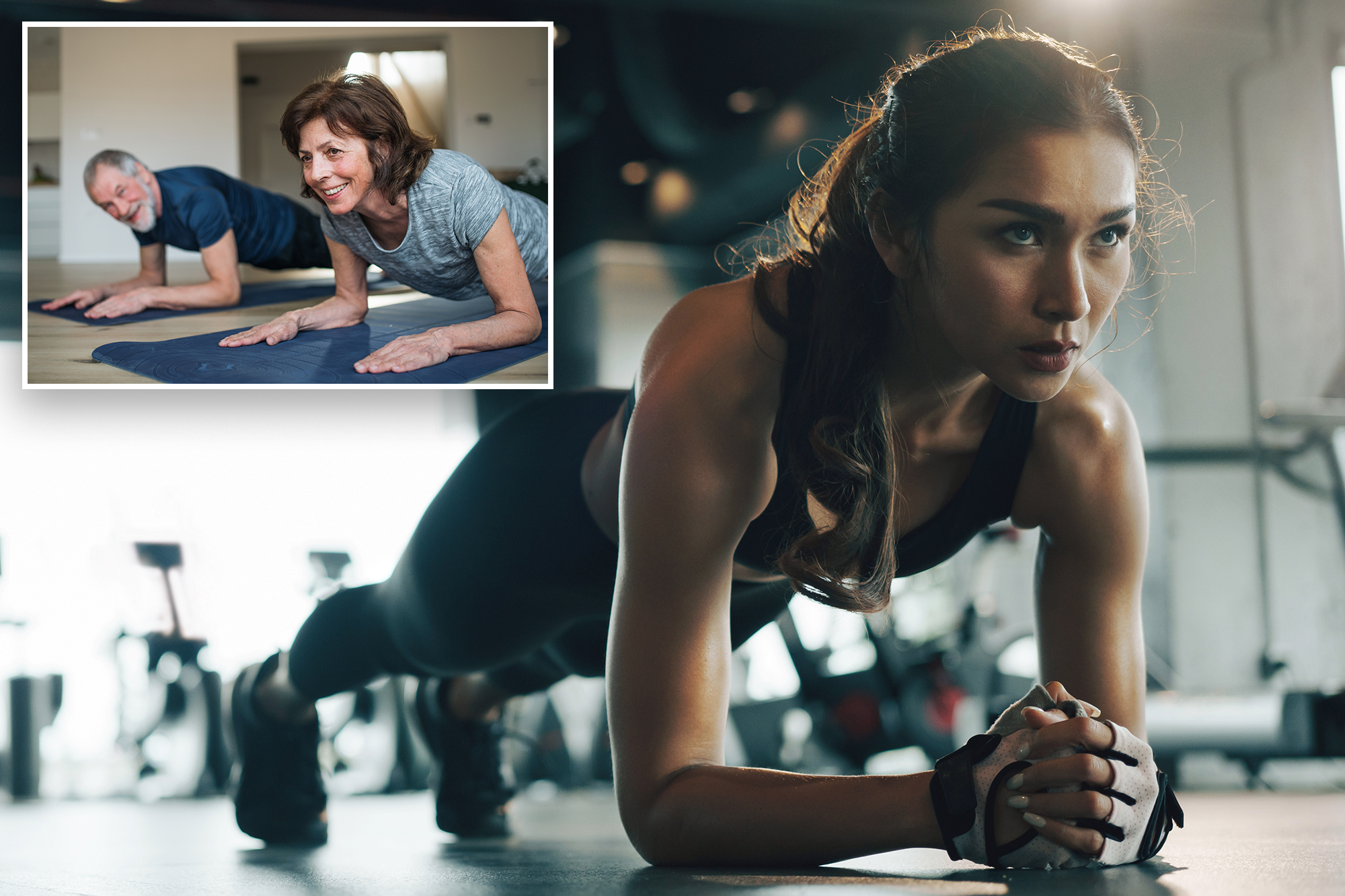
When it comes to an exercise, being solid on board is not a bad thing.
“Planks not only improve essential strength, but also involve numerous muscle groups, increasing the overall coordination of the body and stability,” said Phoenix Carneval, a Class experience leader at the Life Wall Street in Manhattan with more than 20 years in fitness industry.
The world record for the longest board is a 9-hour abs-urd and 38 minutes for men, and 4 hours and 30 minutes for women. But you don’t have to keep it so long to see real results.
The post spoke with Carneval to find out how long you should be able to keep a chalkboard at any age – and what you find about your health if it falls short.
Strong essential profits
You can photograph a six pack when you think of a strong essence, but there are many more that are happening under the surface.
The central part of your body is made up of 35 groups of muscles, including ABS, lower back, thighs, glutes, diaphragm and pelvic floor – and the boards all work.
“Being able to hold a board shows that you have a strong essence, which is essential for good behavior, balance and general physical performance,” Carneval said.
Regularly incorporating boards in your exercise routine can also strengthen your metabolism, improve your behavior, prevent damage and even support life expectancy by keeping you mobile and active with age, she added.
“In a mental note, good behavior can positively affect your mental health – you will stand long and proud,” Carnevale said. “The body eventually affects the mind, so long stay can make you feel more willing to get the day.”
How long do you have to be able to crush?
Your age is not a free passage to switch to boards.
A 100-year-old Long Island woman recently made titles holding a five-minute chalkboard, while a six-month-old in Kentucky melted hearts online holding the position for 34 seconds.
Carnevale said the amount of time you need to be able to maintain a change of boards with age. She destroyed her by decade.
In your 20s
Aim for a 1 to 2-minute chalkboard.
“At this age, you are very adaptable, making it a great time to build strength and develop healthy fitness habits,” Carneval said.
In your 30s
Keep it strong 1- to 2-minuta going strong.
“Your metabolism can start to slow down, so maintaining essential strength is essential,” Carneval said.
At this age, longer working hours and more time sitting can make a number on the back and hips, she said, but boards can help prevent problems.
In your 40s
Aim for a 1-minute hold or longer.
“This decade is often about maintaining what you have built over the years and avoiding repeated stress damage,” Carneval said.
In all of your 50s
Shoot for a chalkboard 30 to 60 seconds.
“As we grow old, it is important to focus on stability and strength,” Carneval said. “Sliding and falls can happen, but great essential strength keeps you stable.”
In the 60s and above
Try to hold a plank for 20 to 30 seconds.
“The changes are completely okay here, as the key is to maintain essential commitment without strain,” Carneval said.
Shake after 5 seconds? Here’s what you mean
“If you find yourself unable to hold a plank for the suggested duration, this may indicate a need to strengthen your essential and general level of fitness,” Carneval said.
But progress takes patience.
“Think about gradual progress – getting a little better every time leads to great results,” she added.
Carnevale recommends start with shorter retention and construction by adding five seconds at a time.
If you start shaking, distracting your mind – sing a song, talk to yourself or find another mental trick to go, she advised.
“You will be surprised at what you can achieve if you make it a game and have a little fun,” Carnevale said.
Listen to your body
“If someone has an injury, it is important to prioritize safety first,” Carnevale said.
She recommends checking with a physician or physical therapist before starting the boards. There are many modifications to keep you safe – how to make knees on your knees or use props for additional support.
“Always listen to your body and focus on soft movements that do not exacerbate any existing conditions,” Carneval added.
How to nail the perfect forearm board
Start the face down on the floor. Place your flat forearms, elbows just under your shoulders, with shoulder width.
Commit to your ABS, then push your forearms, balancing your fingers. Keep the stomachs and stomach raised so that your body forms a straight line from head to heel.
Tighten your essence, glutes and feet for stability. Take a breath slowly and steady, keep your neck neutral and eyes just slightly down.
“If you are looking for more a challenge, there are always ways to improve,” Carnevale said. Try to get a stability ball, using TRX suspension strips or adding a weighted vest.
Want a coach? Carneval runs the classroom in life a wall Street and online through the application of life of life – from the essential and upper body to balance and kickboxing.
#long #chalkboard #age
Image Source : nypost.com